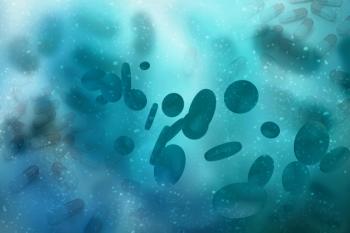
Oncology NEWS International
- Oncology NEWS International Vol 5 No 12
- Volume 5
- Issue 12
Human Genetic Map Goes On-Line
BETHESDA, Md--The human gene map has found a worldwide audience via the Internet. Researchers have published a new map containing the locations of more than 16,000 genes identified so far in the Human Genome Project (Science 274:547-562, 1996).
BETHESDA, Md--The human gene map has found a worldwide audiencevia the Internet. Researchers have published a new map containingthe locations of more than 16,000 genes identified so far in theHuman Genome Project (Science 274:547-562, 1996).
At the same time, the National Library of Medicine (NLM) has openeda user-friendly, graphic-rich, and data-dense World Wide Web site,to provide information to scientific researchers, clinicians,students, and the public.
By logging on to the new Web site, http://www.ncbi.nlm.nih.gov/Science96,the public can get basic information about specific genetic diseases;clinicians can get information to educate their patients and updatetheir own knowledge; and students and scientists can call up awealth of scientific data and research publications.
Equal Access for All
A patient, for instance, can call up a layman's description ofa disease, say Alzheimer's or diabetes mellitus, learn about organizationsthat focus on the disease, such as the Alzheimer's Association,and then have the option to tap into scientific publications.
Indeed, anyone visiting the web site will have the same accessto information--from casual Internet surfer to the world's leadingmedical researchers.
"Scientists, of course, have been using the Internet fordecades," said NLM director Donald A.B. Lindberg, MD. "Nowthis information is open to anyone with access to the Internet--thehigh school biology student as well as the scientist. Each willbe looking at precisely the same data. Each will now be limitedonly by the knowledge and understanding he or she brings to thetask."
The Science paper, carrying the names of 104 scientists from aninternational consortium of genome labs in North America, Europe,and Japan, reveals the locations of 16,334 genes identified fromamong the estimated 50,000 to 100,000 genes that comprise thehuman genome. The number of human genes mapped to specific siteson specific chromosomes has tripled in the last 2 years.
The genes are included in the new map whether or not their functionin the body is known. Indeed, only about 10% of the genes on themap are fully characterized. The others represent small stretchesof DNA that identify the gene, but which require more informationbefore researchers can tell what the gene looks like and the proteinfor which it codes.
Translated to the Internet by an NLM team led by Mark S. Boguski,MD, PhD, and Greg D. Schuler, PhD, the map will be updated frequentlyto include newly identified genes.
The gene map represents the third of three genomic maps compiledby the Human Genome Project. The other two, called genetic mapsand physical maps, chart the location of certain molecular markersthat help researchers locate the position of a gene.
Articles in this issue
about 29 years ago
AHCPR to Fund Analysis of the Impact of Managed Care's Growthabout 29 years ago
Avon Funds Breast Cancer Awareness Program for Orthodox Jewish Womenabout 29 years ago
Friends of Cancer Research Campaignabout 29 years ago
Four Cancer Chemoprevention Trials Seek Subjectsabout 29 years ago
Overall US Cancer Mortality Rate Falls for the First Timeabout 29 years ago
Four Scenarios Describe Impact of Cancer Research in 2015about 29 years ago
New Edition of NABCO Breast Cancer Resource List Is Now Availableabout 29 years ago
Changes in Congressional Committee Chairmen Could Impact OncologistsNewsletter
Stay up to date on recent advances in the multidisciplinary approach to cancer.

















































































